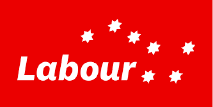[Published by the Irish Times on 22nd October 2021]
Kim Stanley Robinson’s 2020 novel The Ministry for the Future tells a horror story of climate breakdown. Deadly heatwaves that kill millions in a week, devastating acts of eco-terrorism, acute water shortages and accelerating extinction rates.
The book can be read as “a vast scenario exercise showing how the transformation of finance becomes part of the solution to the climate crisis,” according to Nick Robins, professor of sustainable finance at the London School of Economics.
In the book, the Ministry for the Future, a fictional body set up under the Paris Agreement, issues a new currency called the carbon coin, in support of projects that sequester carbon from the atmosphere such as forestry. In the novel, the world of finance takes this shift in its stride and the carbon coin becomes just like every other commodity, in the process “hedging the apocalypse”. If only.
So far there is little evidence that international emissions trading mechanisms have delivered meaningful reductions in greenhouse gas emissions. There has been much talk of the huge potential for trading in carbon credits to incentivise and reward mitigation. But is this just a euphemism for the creation of a new class of assets for speculators? Does trading really benefit the global atmosphere?
We are about to find out. When delegates from the world’s nations reconvene at the end of this month in Glasgow for Cop26 they will resume consideration of the last section of the Paris Agreement rulebook that has not yet been finalised – article 6. The purpose of emissions trading under article 6 is to allow parties to co-operate in pursuit of higher ambition. So far so good. Article 6.2 makes it clear that transfers of what are called “mitigation outcomes”, such achieved emissions reductions, must be subject to robust accounting to avoid double counting of emissions reductions.
Nationally determined contributions
Basically this means that if country A overachieves its nationally determined contribution (NDC) it could “sell’ the surplus to country B, but the emissions reductions can only be recorded on one party’s inventory, not both. The Paris text tries to circumvent the potential for “hot air” by requiring “environmental integrity” and an “overall mitigation in global emissions”, but there is no agreement yet on how to operationalise these aspirations in the draft rules. The Paris decision makes it clear that a corresponding adjustment must be made to the host country’s inventory if mitigation outcomes are transferred. It should be noted that this principle may also apply to transactions under article 6.4 under the sustainable development mechanism, depending on what is agreed in Glasgow.
Rules establishing common baselines for NDCs are still unresolved. Because many aspects of the Paris Agreement were deliberately vague to maximise the chances of agreement, countries have submitted NDCs that are often widely different in scope and coverage, with different base years and metrics. For instance, China is now proposing to peak carbon dioxide emissions before 2030, and to lower carbon intensity by more than 65 per cent in 2030.
Brazil’s latest targets to reduce emissions are unchanged on paper, but a change to the base year means that Brazil can continue to increase its emissions and still meet its targets. The variety of NDC formats mean that drawing up rules for article 6 is extremely technically challenging and it is not a foregone conclusion that agreement will be reached in Glasgow.
Offsetting emissions
What would the implications be for carbon trading if there is no agreement on article 6? In the real world, the voluntary carbon market is exploding, given the desire of companies, countries and even individuals to offset their emissions. Essentially, they are paying for the moral right to pollute. Voluntary carbon offsets are generated and verified by private entities such as Verra or the Gold Standard and sold onwards to anyone who wants to buy them. But all carbon credits, whether for compliance or voluntary markets, make the same fundamental and often dubious claim: that one credit is equivalent to one tonne of carbon sequestered/drawn down.
In the absence of a new regulated market under the Paris Agreement, the private sector has seen a global surge of demand for carbon credits that are now largely coming from forestry and land-use projects. The ratings agency Fitch recently estimated that demand for carbon credits will outstrip supply by 2025, and much of this demand is driven by the aviation sector’s offset mechanism, Corsia.
The rising demand for carbon offsets explains the spotlight on the potential for carbon credits from soils and forestry. The Irish Farmers’ Association (IFA) has sought legal advice to claim “ownership” of all the forest carbon on privately owned land, even where it was subsidised by the State. But if the IFA is successful, article 6 rules may require corresponding adjustments to the national inventory, which could further undermine Ireland’s chances of meeting our own national targets for 2030. It goes without saying that we don’t have any spare forest credits to be giving or selling away.
Greenwashing by companies, and business-as-usual lifestyles and business models are driving this demand. It is possible to imagine a fictional world where a new carbon currency shifts finance to developed countries and where sequestration can be incentivised for the benefit of people and planet. But a Ministry for the Future, seeking to guarantee the survival of our civilisation, would not allow us to hedge that future.

